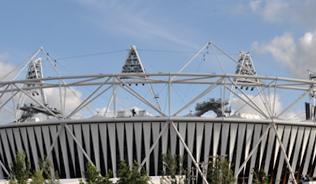Since 1997 all local authorities have been carrying out reviews and assessments of air quality. If this monitoring highlights areas where the national air quality objectives are unlikely to be met, under the Environment Act 1995 they are required to designate an Air Quality Management Area (AQMA). These areas can range in size from one street to very large urban expanses. The local authority is then required to prepare and act on a Local Air Quality Action Plan, to improve air quality in these areas, to protect public health.
As the majority of local authorities have now designated at least one AQMA, the IES/IAQM decided to investigate the different approaches taken to designation by different authorities. On the map below local authority (LA) areas in England, Scotland and Wales are shaded according to the percentage of the total LA area which is designated as an AQMA. This information was collected through a Freedom of Information request in 2014, to which 204 responses were received. Those LAs for which no data was made available to the IES are displayed in white.
Key - Percentage of local authority area designated as AQMA:
| 0-10% | |
| >10-20% | |
| >20-30% | |
| >30-40% | |
| >40-50% | |
| >50-60% | |
| >60-70% | |
| >70-80% | |
| >80-90% | |
| >90-100% | |
| No data available |
As the map above demonstrates, the majority of LAs have designated only very small proportions of their areas as AQMAs, mostly falling into the 0-10% bracket. In fact, the majority of these LAs have in fact defined significantly less than 1% of their area as an AQMA. Nevertheless, two distinct approaches can be seen on the above map. In many urban areas much larger percentages of LAs are designated as AQMAs, and sometimes the entire LA area. This can be most clearly seen in the London Boroughs, but also around other cities such as Liverpool, Birmingham and Oxford.
As part of this investigation LA population data was also collected. Our analysis shows that there is a weak positive correlation between a high population density and a high proportion of a LA being designated as an AQMA. In these urban areas it should be expected that air pollution levels will be higher and more likely to exceed limit values. As such, it should also be expected that greater areas will require remediative action. Nevertheless, where councils have designated the whole, or a large portion, of the LA area as an AQMA, resulting action will inevitably be less targeted. In these cases, perhaps the AQMA designation is not the best policy measure for bringing about meaningful change.
This analysis has highlighted a loose dichotomy in the approaches of local authorities to AQMA designation. This may be of interest to policy-makers, particularly if a new UK Air Quality Strategy is developed in the course of the next parliament, as has been recommended by the House of Commons Environmental Audit Committee and the Institute for Air Quality Management.
The IES expresses its thanks to those local authorities which provided data for this investigation under a Freedom of Information Request.





